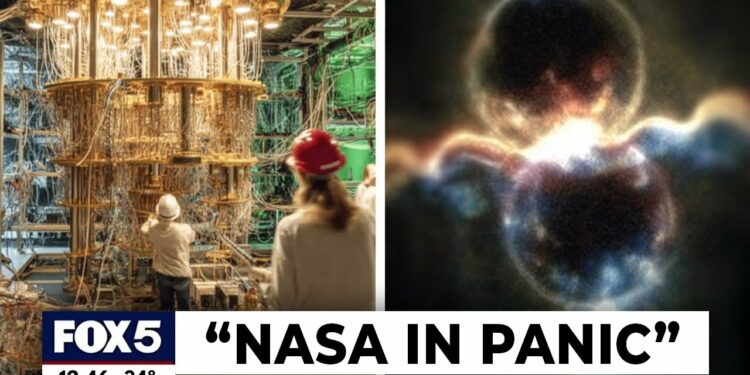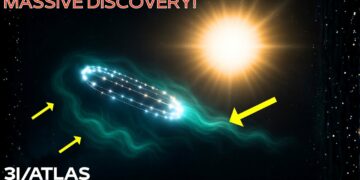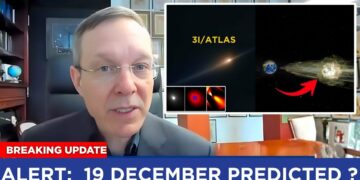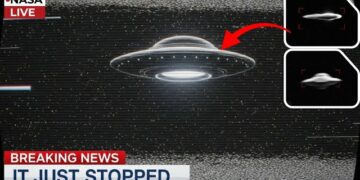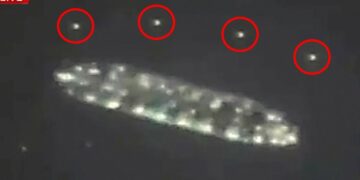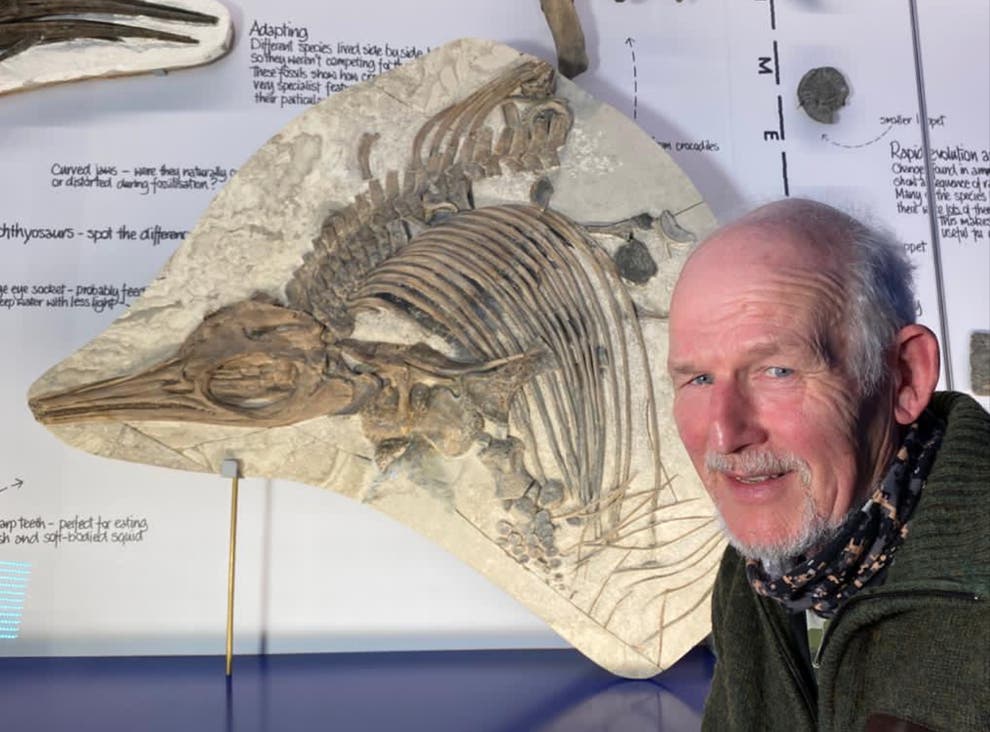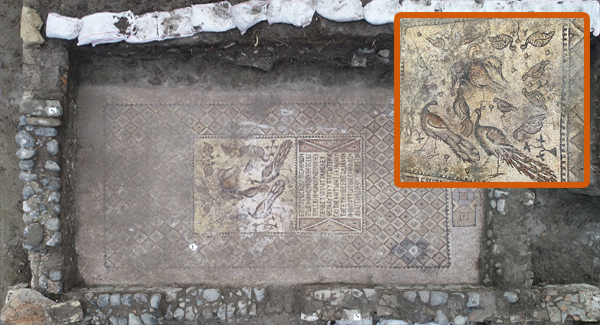A startling discovery at CERN has shaken the scientific world: a new particle, never before seen in nature, has been detected. Renowned physicist Michio Kaku has sounded the alarm as the Large Hadron Collider (LHC), the most powerful machine ever built, was abruptly shut down. Whispers of mysterious energy fluctuations and fears of reality-altering experiments gone awry have left scientists and the public on edge. Is this the prelude to a catastrophic event, or is there more to the story? Stay tuned as we unravel the chilling truth.
Introduction to the Large Hadron Collider (LHC)
The LHC, operated by CERN (European Organization for Nuclear Research), is a colossal 27-kilometer particle accelerator buried beneath the Swiss countryside near Geneva. Built between 1998 and 2008, it began operations in September 2008, becoming a cornerstone of experimental physics. Designed to smash protons together at near-light speeds, the LHC recreates conditions from moments after the Big Bang, reaching energies in tera electron volts (TeV). Its mission is to probe fundamental questions about matter, energy, and the universe, testing theories about quarks, leptons, bosons, and the origins of mass. The landmark discovery of the Higgs Boson in July 2012 confirmed the existence of a field that gives particles mass, validating decades of theoretical work.
Beyond science, the LHC has sparked public fascination and fear. Early concerns about creating black holes or triggering doomsday scenarios have been dismissed by physicists, but its immense power continues to fuel speculation about cosmic risks. The collider’s underground placement shields it from radiation and stabilizes its operations, with hundreds of superconducting magnets, cooled to -271°C by liquid helium, guiding particle beams. This multinational effort involves over 10,000 scientists from 100+ countries, processing 15 petabytes of data annually to uncover the universe’s secrets.
Structure and Functionality of the LHC
The LHC operates as dual accelerators, propelling two beams of hadrons (usually protons, sometimes heavier ions) in opposite directions around its 27-kilometer loop. At four key interaction points, the beams collide, producing a cascade of subatomic particles. Sophisticated detectors—ATLAS, CMS, ALICE, and LHCb—analyze these collisions, each focusing on distinct research areas. ATLAS and CMS explore broad physics, including the Higgs Boson and supersymmetric particles; ALICE studies quark-gluon plasma from heavy-ion collisions, mimicking the early universe; and LHCb investigates matter-antimatter asymmetry.
Superconducting magnets, cooled to near absolute zero, maintain beam precision, while smaller pre-accelerators boost particle energy before injection into the main ring. By 2010, the LHC achieved 3.5 TeV per beam, later upgraded to 6.5 TeV, quadrupling previous records. The collider’s underground tunnel, 50–175 meters deep, crosses the Swiss-French border. Timing is critical, with collisions occurring at precise points, and detectors capture fleeting particle states in real time. Advanced trigger systems filter billions of collisions to save only the most significant data.
Construction and Costs
The LHC’s tunnel was repurposed from the Large Electron-Positron Collider (LEP), built in the 1980s, saving costs but still requiring €7.5 billion, including €2.6 billion for the collider and additional funds for experiments. Launched on September 10, 2008, the LHC faced a setback days later when a magnet quench caused helium leakage, damaging 50+ magnets and delaying operations for 14 months. Repairs and safety upgrades followed, and by 2010, the collider reached 3.5 TeV per beam. Further upgrades by April 2022 pushed energies to 6.8 TeV for Run 3. Funding comes from European nations and global partners, supporting a vast network of scientists and computing centers. Maintaining a vacuum in the beam pipe and cryogenic systems adds to costs but ensures operational precision.
Key Discoveries and Achievements
The LHC’s Run 1 (2010–2013) delivered the Higgs Boson discovery on July 4, 2012, a triumph for the Standard Model, earning Peter Higgs and François Englert the 2013 Nobel Prize. The run also produced quark-gluon plasma in heavy-ion collisions, replicating conditions microseconds after the Big Bang, and clarified quantum chromodynamics through bottonium studies. Run 2 (2015–2018) doubled collision energies to 6.5 TeV, uncovering 59 new hadrons, including tetraquarks and pentaquarks. Run 3, starting in April 2022, aims for 6.8 TeV and higher collision rates to detect rare phenomena. A notable find in July 2022 was a new pentaquark, advancing understanding of the strong nuclear force. The synergy of ATLAS, CMS, ALICE, and LHCb continues to unravel subatomic mysteries, from quark-gluon plasma to potential dark matter clues.
The Higgs Boson and Its Significance
The Higgs Boson, detected at 125 GeV/c², confirmed the Higgs field’s role in giving particles mass, a mechanism essential for atoms, molecules, and life itself. Its discovery validated the Standard Model but raised questions about connections to dark matter or extra dimensions. Speculation about a false vacuum state—where the Higgs field could collapse, reshaping the universe—is theoretically possible but improbable on cosmic timescales. Ongoing LHC runs seek subtle deviations in Higgs properties that could hint at new physics, refining our understanding of the universe’s formation.
Magnetic Field Crack Incident
On July 7, 2022, a 14-hour crack in Earth’s magnetic field allowed solar wind to trigger a geomagnetic storm, producing auroras in Canada and the US. Coinciding with LHC’s Run 3, it sparked rumors of collider-induced disruptions. Experts attribute the crack to solar co-rotating interaction regions (CIRs), not LHC activity, as cosmic rays far exceed the collider’s energies. The auroras, while spectacular, were a natural phenomenon, not evidence of LHC interference.
Theoretical Risks and Concerns
Fears of false vacuum collapses or miniature black holes have been debunked, as cosmic rays naturally produce higher-energy collisions without catastrophic effects. Miniature black holes, if formed, would evaporate via Hawking radiation. Conspiracy theories about portals, mind control, or demonic realms lack evidence, often fueled by misinterpretations of CERN’s Shiva statue—a cultural gift symbolizing cosmic creation, not destruction. Safety protocols, enhanced after the 2008 magnet quench, ensure operational stability, and CERN’s transparency counters misinformation.
Upgrades and Future Plans
The LHC’s Run 3 (2022–) uses upgraded detectors and 6.8 TeV beams to increase collision rates. The High-Luminosity LHC (HL-LHC), set for 2029, will boost data collection tenfold, enhancing searches for rare phenomena. A proposed Future Circular Collider (FCC), with an 80+ kilometer tunnel, could reach energies beyond 14 TeV, though it remains conceptual. Upgrades involve new magnets, cryostats, and AI-driven data analysis to handle growing data volumes. The LHC is expected to operate into the 2040s, driving discoveries in dark matter, extra dimensions, and early universe conditions.
Broader Implications
The LHC’s innovations extend beyond physics, advancing MRI technology, data analysis, and computing. Its collaborative model inspires global projects in space and biomedicine. By probing dark matter (27% of the universe’s mass-energy) and extra dimensions, the LHC shapes cosmological theories. Heavy-ion collisions reveal quark-gluon plasma, shedding light on the Big Bang’s aftermath. Educational outreach fosters expertise in physics, engineering, and data science, ensuring the LHC’s legacy as a beacon of human curiosity and technological progress.

